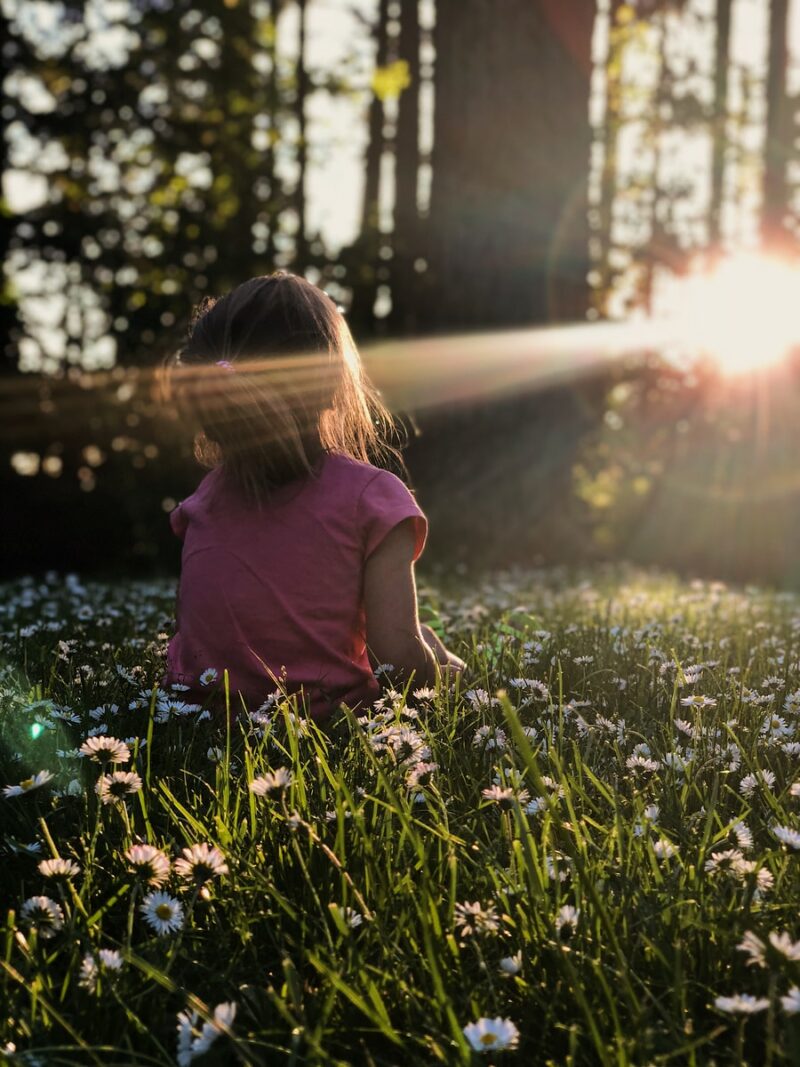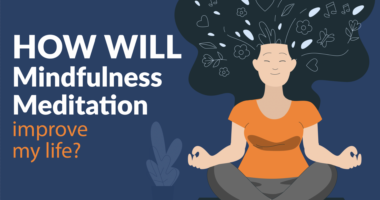People often overlook the potential benefits of mindfulness for kids. We know what you’re probably thinking: “Most kids are little balls of energy, right? Is it even possible for them to step back from the world and embrace inner calm?” In short, yes!
Equipping kids with the ability to step back from an overwhelming world and reflect on their lives is a great way to protect their mental health. Thanks to the digital revolution, today’s kids are exposed to a range of confusing and overstimulating online phenomena. By encouraging them to practice mindfulness, you can help your kids avoid some of the darker effects of the digital world and live happy, fulfilling lives. Other potential benefits include:
- Better stress management and overall wellbeing
- Improved attention span
- Better awareness of their body and senses
- Closer connection with nature
- More empathy and compassion for others
- Improved ability to regulate and process their emotions
So, how can you integrate mindfulness into your child’s life? The first thing to understand is that kids should attempt mindfulness activities designed for their age group. The younger they are, the more direction and playfulness they require. Once your child has honed their ability to meditate and remain still for at least a few minutes, they may be able to progress to more sophisticated techniques.
To help you and your child get started with mindfulness, we’ve put together a comprehensive guide to mindfulness techniques, organized according to age group. We’ve got something to suit every child, from preschoolers to teenagers. So, what are you waiting for? Give it a go today!
Here is what you’ll find in this article:
Activities for preschoolers
Very young kids are fascinated by the world, meaning they often have difficulty sitting still. With this in mind, you should approach mindfulness in a realistic and relaxed way. Try to introduce concepts gently, and don’t get frustrated when your kid doesn’t pick them up immediately. Mindfulness for kids is about personal growth and wellbeing, after all! Here are some of our favorite activities for young kids:
1. Listening to nature
This activity is great for groups of young children but can also work with one child and an adult. Head to your local park or beauty spot and sit down in a circle. Ask the children to close their eyes and listen closely to the sounds of nature for up to two minutes. Remind them not to call out their answers but remain silent until the listening time is over. When time’s up, they can share their experiences.
2. Looking at clouds
This activity is similar to the nature task described above. Rather than listening to nature, however, you should prompt your kid(s) to look at the clouds for a couple of minutes. Ask them to spot different shapes and observe how the clouds move through the sky.
3. Describing feelings
This is a simple task that helps kids process their emotions. Prompt your child to describe how different emotions feel (e.g., happiness, anger, sadness). If it helps, ask them to visualize their feelings as colors, sounds, or types of weather.
4. Guided visualization
Once your child has grasped some of the activities above, you can move on to trickier tasks such as guided visualization. Ask them to lie on a comfortable mat and close their eyes. Then, guide them through a calming visualization story (e.g., imagining they’re lying on a beach or sitting in a calming forest).
5. Counting breaths
Why not combine your child’s new numeracy skills with some mindful breathing exercises? Ask them to count to ten in their heads as they breathe in and another ten as they breathe out. Repeat this exercise and ask them how they feel afterwards. They’ll probably feel relaxed, calm, and ready to learn!
If your child consistently struggles with the activities listed above, try the following mindfulness for kids:
- Do something energy-intensive beforehand to reduce their inclination to fidget
- Don’t approach activities too seriously – make them fun and playful!
- Practice regularly and keep activities short
- Give very simple instructions
Mindfulness for Kids: Elementary School
Most of the activities listed above are also suitable for elementary school kids. However, you can also introduce them to some slightly more complex activities, including:
1. Feeling your heartbeat
Kids in elementary school will start to receive their first-ever homework assignments and personal projects. While this is often an exciting prospect, some kids find it stressful and overwhelming. If you notice your kid becoming frustrated or upset by their homework, encourage them to stop what they’re doing and do jumping jacks for one minute. Then, ask them to place their hand on their chest and observe how their breathing and heartbeat feel.
This task helps children focus on their bodily sensations and improve blood circulation to the brain – a great way to enhance motivation!
2. Go on a garden safari
If your child is feeling a little tense or stressed after school, this activity will help to redirect their focus and put their worries into perspective. A garden safari is essentially a roam around your backyard. Ask your child to verbalize their sensory experiences, from the sight of brightly colored bugs to the smell of fresh-cut grass. This activity will help them appreciate the world around them and learn to decompress after a hard day. If you don’t have a backyard, take a short trip to your local park.
3. Warrior stance
One of our favorite mindfulness for kids activities is Warrior Stance. This activity is great for kids who need a little confidence boost and a distraction from racing thoughts. Ask them to stand with their feet wide apart, turning their right toes outwards and pressing their left heel away. Then, they should bend their right knee and stretch out their arms (like a pro surfer!). Ask your child to hold this stance for a few seconds, breathing deeply and noticing how their body feel. After around 20 seconds, they should shake their legs out and try again on the other side.
4. Taste different foods
Is your kid a fussy eater? This mindfulness activity could help them develop a more complex palate and appreciate the sensations food produces. Start with a treat you know your kid loves (yep, this means cookies, ice cream, chocolate etc.!). Get them to put a morsel of food on the tip of their tongue and slowly chew it, focusing on its flavor and texture. Savoring food in this way will encourage gratitude and open your child’s mind to more adventurous meals.
Mindfulness for Kids: Middle School
Okay, here’s where things may start to get a little tricky. Middle schoolers are less likely to follow instructions from their parents as they try to foster a sense of independence. This is totally normal and should be encouraged! However, gently suggesting a few of these activities could help your child weather the transition into early teenagehood.
1. Simple breathing exercise
This is a super quick exercise that your middle schooler can fit into their busy schedule. Begin by setting a timer for one minute. Then, they should breathe deeply, in through the nose and out through the nose. Ask them to notice how their breath feels as it moves in and out of their body, paying attention to the sounds and smells in the room. If they experience intrusive thoughts, they should try to push them out of the way. When the minute is up, they can resume their day feeling calmer and more relaxed. As your kid gets better at this exercise, they can do it unsupervised and for longer periods of time.
2. Take a mindful walk
Encouraging your child to take a walk is a great way to disconnect them from social media and dampen their worries. Ask them to leave their cellphone and other digital devices at home and walk with you to a place of natural beauty. As you walk, talk about the sensations you experience, from the wind on your face to the sound of the birds. Your kid may find disconnection from digital technology tricky at first, particularly if they’re naturally anxious. After a few walking sessions, however, they’ll start to enjoy the liberation it brings!
3. Keep a gratitude diary
This exercise is great for middle schoolers who prefer to undertake activities independently, rather than with supervision from their parents. Start by purchasing them a shiny new diary – kids love a gift! Then, ask them to record everything they’re grateful for on a given day. Don’t be too pushy or ask to read the diary – it’s an invasion of their privacy. However, feel free to ask general questions about how their gratitude diary is going and how it’s affecting their mood. With any luck, they’ll feel more appreciative of everything they have and stop sweating the small stuff.
Mindfulness for Kids: High School
When your child reaches high school, they’re well on the way to becoming fully-fledged adults. As such, they should be able to try out mindfulness activities designed for adults. If you’re new to mindfulness and want to get started, why not embark on your meditation journey alongside your high schooler? You never know – they could even teach you a thing or two! Here are some simple exercises to get you started:
1. The body scan
The body scan is a very popular mindfulness technique among adults and is simple enough for you and your teenager to try. Start by lying on a comfortable surface, with your eyes closed. Then, think about how individual parts of your body feel, from your toes all the way up to the crown of your head. When thinking about each body part, try to relax it completely. If necessary, you should clench and unclench each body part. When you’re finished with the scan, you should be feeling much more relaxed and ready to take on the day.
2. Tricky puzzles
Puzzles such as crosswords, sudoku, or the hugely popular Wordle are great for refocusing the mind and building mental agility. Why not arrange short puzzle sessions with your teen every few days? They may enjoy the competitive aspect!
3. Mindful yoga
Yoga and meditation go hand in hand. If your teen is hoping to get more active and improve their mental wellbeing, yoga represents a great place to start. Why not sign them up for classes or search for instructional videos online?
4. Mindful cooking
Mindful cooking represents a very effective technique to reduce anxiety, clear the mind, and teach your teens some vital life skills! It’s a good idea for you to supervise your child if they’re new to cooking but try to let them take the lead. Start by choosing a simple recipe such as cookies or a healthy pasta sauce.
When your teen starts to follow the recipe, encourage them to focus on the sensory processes involved, including how the food reacts to heat and the smells that fill the room. Encourage them to appreciate the meditative aspects of cooking and appreciate the appearance and taste of their final creations. If they don’t get it right, don’t fret! Mindfulness is all about being kind to yourself and enjoying life’s twists and turns!
5. Mindful baths
Parents often scold their teens for spending too much time in the bathroom, but mindful bathing is a great way to relax and unwind. If your teen has had a tough day, allow them to use the bathroom uninterrupted for at least half an hour or so. Advise them to empty minds and just enjoy the experience – and invest in some fancy bubble bath!
Embark on your mindfulness for kids journey today!
As you can see, there are tons of inventive ways to encourage mindfulness in your kids, whatever their age. Learning stress-busting techniques from a young age is one of the best ways to cope with the trials and tribulations of growing up, so why not get started today? Your kids will thank you in the long run!









